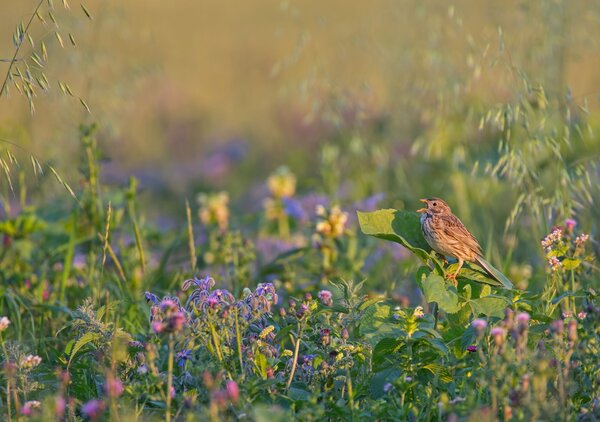Expertise
Promoting agricultural birds through fallow land
Sebastian Klimek, Christian Levers, Norbert Röder, Hannah Böhner | 02.05.2023
Bird populations clearly benefit from agricultural fallows, especially in landscapes with medium structural complexity.
In recent decades, many species groups in the agricultural landscape in Germany have experienced sharp declines, both in the number of individuals and species. Fallow land is considered an effective measure to slow down this decline. Scientists from the Thünen Institute, the University of Göttingen und the Dachverband Deutscher Avifaunisten (DDA) have investigated the relationship between the proportion of fallow land and the number and abundance of agricultural birds over a nine-year study period. The research shows that areas of fallow land can contribute to an increase in the populations of these birds and that the benefits of fallow land depend significantly on the complexity of the surrounding landscape.
To find out where areas of fallow land should be most effectively established, fallows were studied in agricultural landscapes of varying complexity. Complexity was measured by the density of boundary lines between fields, as well as between fields and adjacent woody structures such as hedges or forest edges. Data from the nationwide monitoring of common breeding birds (CBBM) as well as data from agricultural statistics were used for the analysis.
It was found that establishing areas of fallow land is particularly effective in agricultural landscapes that have a medium level of complexity. The average density of boundary lines in Germany is about 65 meters per hectare of agricultural land. Preferably, therefore, fallow land should be established primarily in such landscapes, i.e. in regions with medium structural complexity.
Fallow land and the EU agricultural policy
The EU's Common Agricultural Policy (CAP) has a strong influence on the total area of fallow land in Germany. Due to changes in the CAP, fallow land has decreased significantly since the early 2000s. The loss of fallow land, especially after the abandonment of set-aside in 2007, led to a lack of suitable breeding sites and food for many bird species. Although the so-called "greening" of the past CAP funding period has slightly increased the total area of fallow land in Germany as of 2015, the pre-2007 level has by no means been reached again.
In the new CAP funding period starting in 2023, there is an obligation for farms to set aside 4% of their arable land. This could contribute to an improvement in the population situation for many agricultural birds. In order to restore the pre-2007 level of the bird population, a further increase is required in measures proven to be effective at enhancing biodiversity in the agricultural landscape.
The results of the investigations were published in the Journal of Applied Ecology.
Original paper:
Hertzog L R, Klimek S, Röder N, Frank C, Böhner H G S, Kamp J (2023) Associations between farmland birds and fallow area at large scales: consistently positive over three periods of the EU Common Agricultural Policy but moderated by landscape complexity. Journal of Applied Ecology.
DOI: 10.1111/1365-2664.14400







